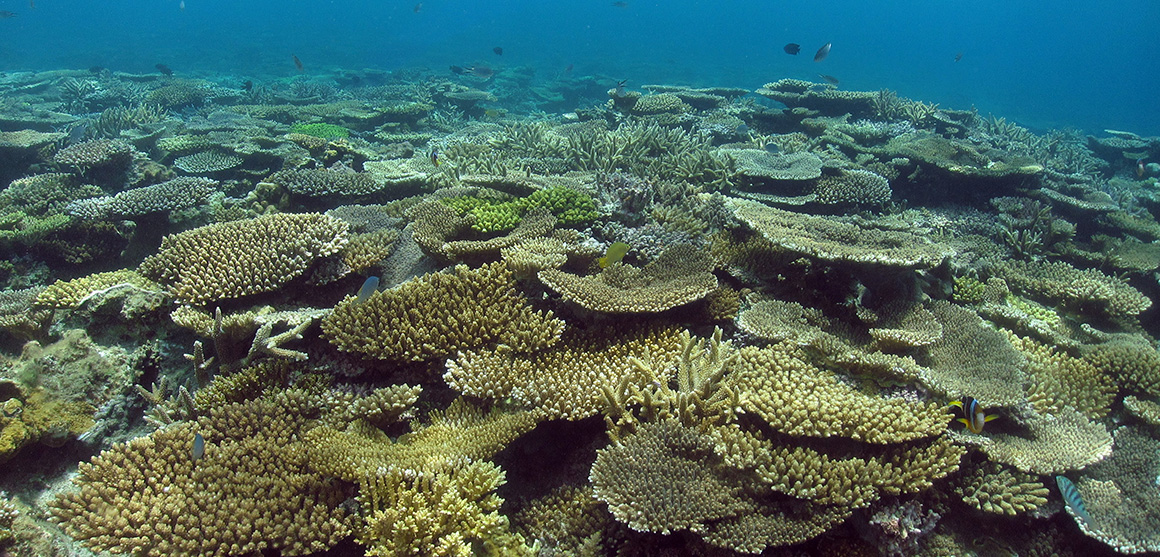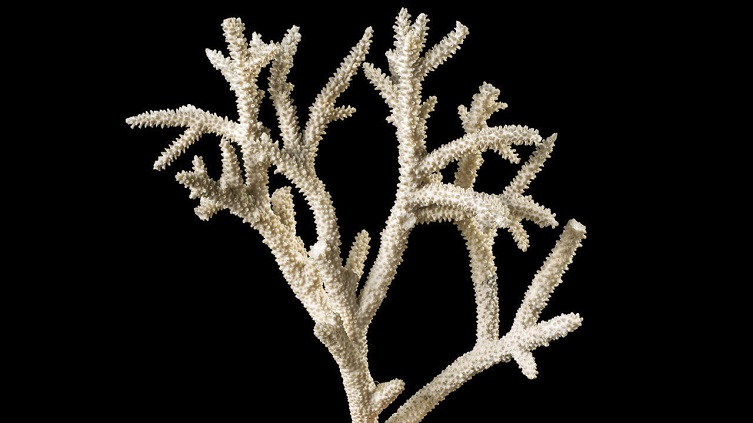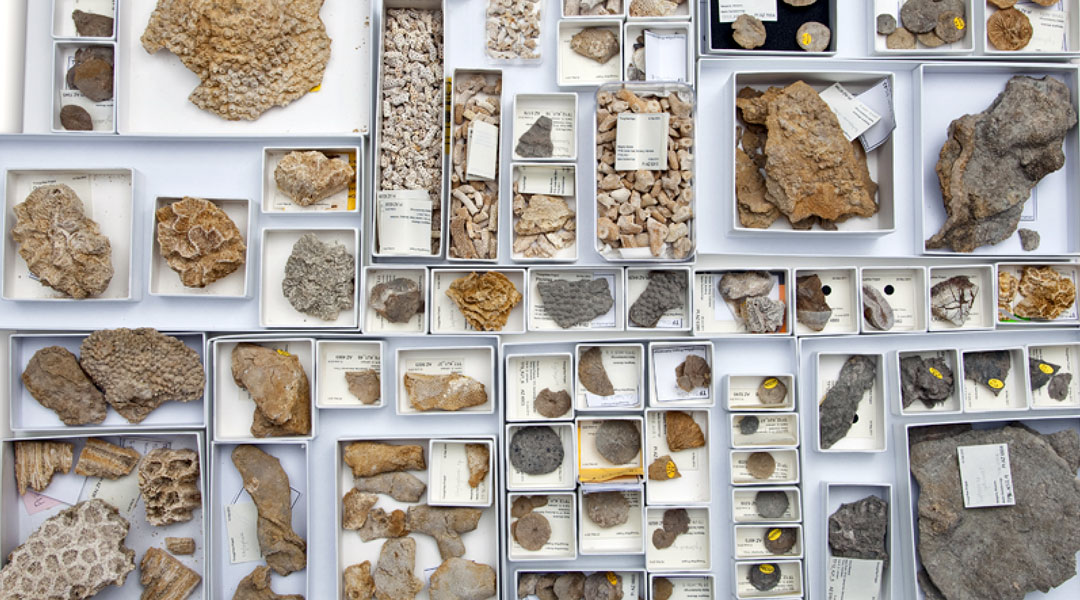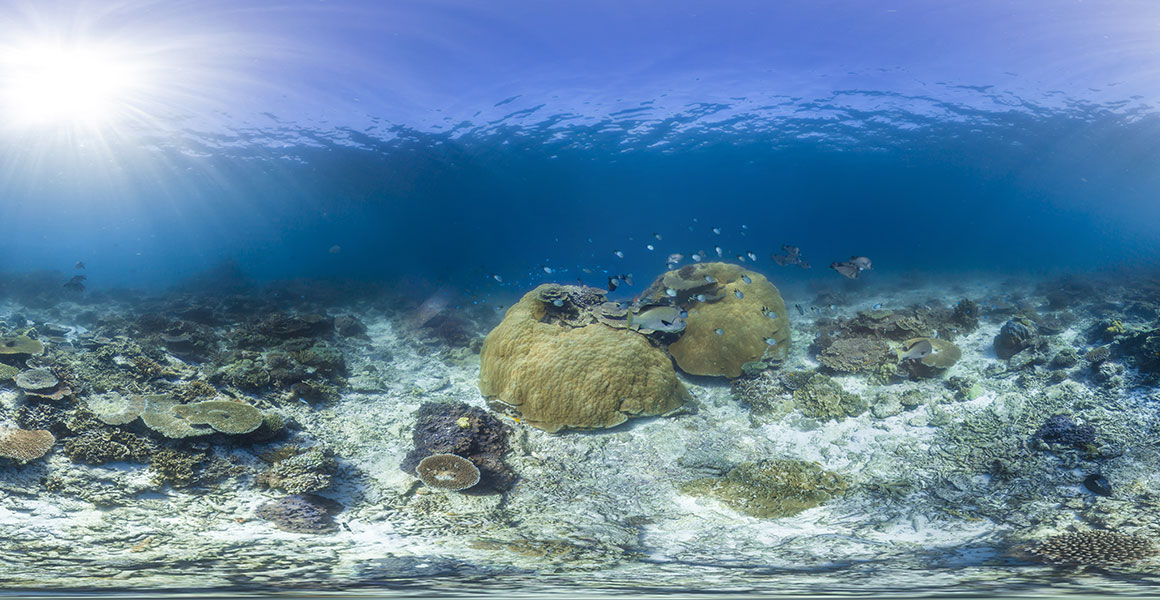Coral reefs could become a victim of their own success, according to Museum researcher Dr Ken Johnson.

Acropora is one of the most widespread coral groups in the world. For the last 1.8 million years it has flourished, helping to support marine life during periods of rapid sea-level change.
But a new study by Dr Johnson and an international team has warned that these corals are at risk of severe decline due to human activity, disease and bleaching. Australia’s Great Barrier Reef is one area currently experiencing devastating bleaching.
Acropora are also known as staghorn corals. They are able to grow much faster than many other coral groups and their limestone skeletons are important to reef building around the world.
Their loss would have dramatic consequences for marine life, and the millions of people who rely on reefs for food and income.
Dr Johnson says, 'The most abundant coral on modern reefs became dominant during the past two million years because it was able to cope with rapid sea-level change.
'Unfortunately it is also very sensitive to changes caused by human activity. So now, this long-essential coral might not be able to play its vital role in reef building or help reefs cope with future sea-level changes.'
The importance of staghorn corals
The continued endurance of Acropora corals is vital to the long-term survival of coral reefs because of their role in building ecosystems.
Formed by colonies of polyps, these branching corals serve as a foundation for other corals and marine life to anchor on to. The structures they form also provide nooks and crannies for fish and other animals to live in.
Secret to their success
The international study, published in Science Advancesopens in a new window, examined global historical sea-level data, as well as global coral occurrence data, dating back more than 60 million years.
Acropora species have existed for 50 million years. During the last 1.8 million years, a series of ice ages - where continental glaciers were repeatedly forming and melting - meant sea levels rose and fell quickly. It was over this period that Acropora established dominance.
The study’s lead author is Dr Willem Renema, from the Naturalis Biodiversity Center in the Netherlands. He explains, 'Staghorn corals became successful because their colonies have the highest growth rates of corals, and because they can reproduce by fragmentation, which helps create new reefs.'
Fragmentation can occur when a coral colony breaks off the main coral because of storms or animal activity and develops into new colonies.
Dr Johnson adds, 'This coral has evolved a mechanism that lets the polyps on the side of its branches pass nutrients to the one at the tip. This allows that polyp to grow up to 10 centimetres per year, much faster than other groups of corals.'
The video above shows a series of cross-sections through a staghorn coral branch, revealing the structure of the limestone skeleton that once contained a living colony of polyps.
This ability to grow upwards quickly means that when sea levels are rising, the reef can still stay near to the light at the surface of the water. Corals take advantage of food provided by algae that live inside them, and these algae need sunlight to survive.
Reefs under threat
Now, staghorn corals are suffering a dramatic decline worldwide and are under threat on most reefs.
Researchers agree that this is because they are particularly sensitive to their changing environment.
He says, 'Worldwide deterioration of coral reefs is widely recognised. They are increasingly affected by warming oceans and acidification, which are both associated with climate change.
'Staghorn corals are very sensitive to this stress being put on marine life.'
The stress is made worse by overfishing, the deterioration in water quality, invasive species and disease outbreaks.
'The decline of staghorn corals is particularly startling, given that they have been a winner for the past two million years,' adds Dr Johnson.
Severe consequences
Corals support vast and diverse ecosystems, forming the basis of vital food chains and providing economic services to millions of people around the world.

Acropora are battling warming oceans and acidification
They also protect shorelines, dispersing up to 97 percent of wave energy before it reaches the coast.
Without them, communities are more vulnerable to flooding from storm surges and tsunamis, and those that rely on fishing or tourism for their livelihood face hardship.
Dr Johnson says, 'Stressors resulting from human activity are expected to get worse in the coming decades. If we don’t do anything to change this, reefs will not function in the same way as they have done.'
This is likely to bring with it a decline in coral reefs and all the biodiversity they support.
'Because reefs have relied so heavily on Acropora in the past, its loss will have a huge impact on their ability to survive in an uncertain future,' adds Dr Johnson.
Hope for the future
However, there is hope. It is possible that corals found in deeper or darker habitats may be more resistant to environmental change, and could fill the gap left behind by staghorn corals.
Co-author Professor John Pandolfi, from the University of Queensland, adds that there are things we can do to encourage the survival of staghorns.
He says, 'Relieving local pressures on staghorn corals - for example, by improving water quality - helps increase their resistance to thermal stress from climate change.
'So by managing local anthropogenic stressors such as sediment runoff, dredging, and other sources of pollution, we can ensure that these corals will be at their best when confronting global warming.'
Related information
- Read the full study in Science Advancesopens in a new window
- Find out about our work on fossil corals and reef systems
- Explore what the fossil record can tell us about how biodiversity has changed over time




Don't miss a thing
Receive email updates about our news, science, exhibitions, events, products, services and fundraising activities. We may occasionally include third-party content from our corporate partners and other museums. We will not share your personal details with these third parties. You must be over the age of 13. Privacy notice.
Follow us on social media